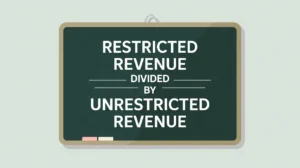Importance of Accounts Payable
Accounts payable (AP) are one of the most visible indicators of a nonprofit’s ability to manage its short-term obligations. They represent amounts the organization owes to vendors, suppliers, and service providers for goods or services already received. For nonprofits in social innovation and international development, accounts payable matter because they directly affect credibility and operational continuity. Paying vendors, contractors, or local partners on time maintains trust, avoids service disruption, and ensures smooth program delivery. Donors, boards, and regulators often review AP levels as part of liquidity and risk assessments, making it a vital measure of financial stewardship.
Definition and Features
Accounts payable are defined as short-term liabilities arising from credit purchases of goods and services, due within a year or the nonprofit’s operating cycle. They typically include unpaid invoices for supplies, utilities, consulting services, or subcontractor fees. Accounts payable are recorded on the Statement of Financial Position under current liabilities. They differ from accrued expenses, which represent costs incurred but not yet invoiced, and from deferred revenue, which reflects funds received in advance of delivering services. Properly managed, AP ensures that obligations are met without straining cash flow, while also allowing nonprofits to benefit from credit terms.
How This Works in Practice
In practice, nonprofits manage accounts payable by maintaining a schedule of outstanding invoices, due dates, and vendor agreements. For example, an NGO might receive medical supplies from a vendor with 30-day payment terms; the unpaid amount is recorded as AP until settled. Finance teams monitor aging reports to ensure payments are made on time and to identify overdue liabilities. Effective AP management involves balancing vendor trust with cash flow needs: sometimes organizations negotiate extended terms to align with donor disbursement schedules. Internal controls, such as invoice approvals and segregation of duties, help prevent fraud or errors in AP processes.
Implications for Social Innovation
For nonprofits engaged in social innovation and international development, accounts payable reflect both operational reliability and local accountability. Timely payment to community partners, vendors, and field contractors builds trust and sustains relationships essential for delivering impact. Conversely, chronic delays can damage reputations and disrupt programs, especially in fragile contexts. Transparent reporting of accounts payable reduces information asymmetry by showing stakeholders how obligations are managed and whether liquidity is sufficient to meet them. By demonstrating strong AP practices, nonprofits signal financial discipline and reinforce confidence among funders, partners, and communities that resources are managed responsibly in support of mission outcomes.







